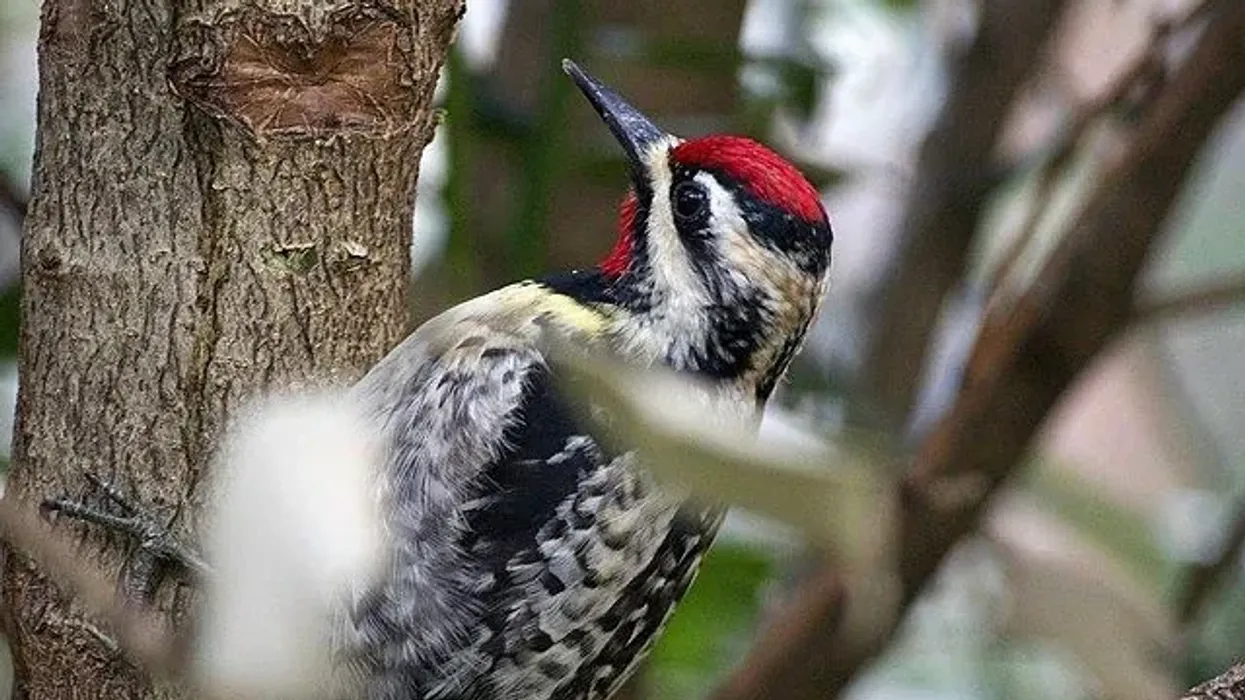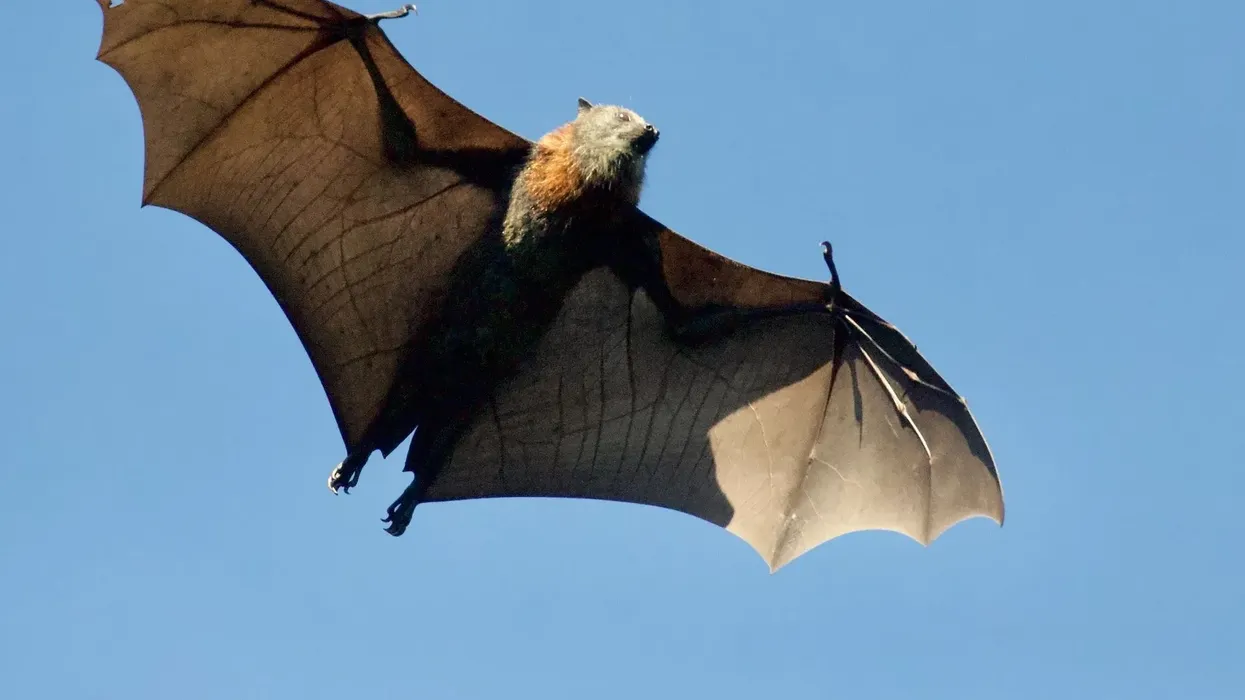The yellow-bellied sapsucker is now positioned in the genus Sphyrapicus that came to be in 1858 thanks to American naturalist Spencer Baird, with the yellow-bellied sapsuckers being the main type of this species. Within the genus Sphyrapicus, this species is sister to a clade containing the red-breasted and the red-naped sapsuckers.
If you like these then you should definitely read our red-breasted sapsucker facts and bluebird facts.
Yellow-Bellied Sapsucker Interesting Facts
What type of animal is a yellow-bellied sapsucker?
The yellow-bellied sapsucker is a woodpecker that breeds in the northeastern United States and Canada.
What class of animal does a yellow-bellied sapsucker belong to?
Yellow-bellied sapsuckers (Sphyrapicus varius) are North American birds that belong to the Aves class of animals. The red naped sapsucker is a similar species to the yellow-bellied sapsucker.
How many yellow-bellied sapsuckers are there in the world?
The exact population is not known but they are found in abundance and are not in concern. This may be because of the huge range map that they have.
Where does a yellow-bellied sapsucker live?
Since this species of birds have a huge range map, yellow-bellied sapsuckers are located across the areas like Canada, eastern Alaska, and the northeastern United States. This species of birds, in winter, are located in the range of eastern United States (U.S), West Indies, North America, and Central America.
What is a yellow-bellied sapsucker habitat?
When this species of sapsucker is breeding, it is commonly found in deciduous and combined coniferous forests at heights of up to 6561 ft (2,000 m). During the non-breeding season, however, it typically inhabits forests.
It is also found in large bushes in pastures, clearings, and suburban areas, further to the occasional look in palm groves. During this time, the birds range from sea level to elevations of up to 10,498 ft (3200 m).
Who do yellow-bellied sapsuckers live with?
Sapsuckers are from the order Piciformes and the family of Picidae, of North America. They live in pairs in holes of tree trunks although they may sometimes search for food in a small group during the winter season.
How long does a yellow-bellied sapsucker live?
In the wild, the yellow-bellied sapsuckers have a life span of up to 81 months (six years). Their life depends on predators and if they are infected with a disease.
How do they reproduce?
The male generally arrives at the nesting grounds approximately one week earlier than the female in the wildlife. The sapsucker arrives early during the spring in the Northern Hemisphere, often before heavy snowfall has stopped.
They nest in a tree that has holes in it and where they can get tree sap. The real breeding season is from April to July. During nest excavation, a bird can also additionally carry out a courtship flight.
This flight includes the Sapsucker rapidly flapping its wings beneath its partner and calls to the female. After nesting, this bird lays a clutch of four to six eggs.
Their eggs are white and spotless. During egg-laying, the female is dominant, from time to time chasing the male away from the nest. Both the sexes incubate the eggs for 13 days.
When the young woodpecker chicks hatch, they're brooded for eight to ten days through each of the sexes. The nest in the tree holes which have lesser young ones are brooded more than the ones with more.
What is their conservation status?
Their conservation status is of Least Concern according to the IUCN Red List. The population of woodpeckers is declining, but still, they are found in abundance.
Yellow-Bellied Sapsucker Fun Facts
What do yellow-bellied sapsuckers look like?

The brow is colored bright red on the male and a lighter color of red on the female.
Sometimes, that is the simplest area on the head a female may have red coloration if it has any at all because the female hardly ever has a black head with some buff spots. The crown is bordered black, and is generally red, and is occasionally blended with black on the female.
There is a white stripe, beginning just above the eye, that extends and widens to the nape, being broken up through a skinny black line at the hind neck.
There is a vast black stripe going through the ear covers and right all the way down to the side of the neck. Below this black stripe is a white stripe that is going from the nasal tufts to the facet of the breast.
The throat and chin may be used to differentiate between the sexes, as they're white on the female and red on the male.
They are red-breasted and the upper tail is black, with a few white webbing and white pointers occasionally being present at the outer feathers.
The underparts, apart from the faded breast and above, are tinged yellow, transitioning to a whiter color on the lower area of them. The chisel-tipped bill is pretty short and straight, with a blackish color.
The legs are blueish-gray to greenish-gray in color and the irides are a deep brown color.
How cute are they?
They are cute to look at according to the bird guide, just like woodpeckers from the U.S. They make their nest in the cavity of trees where they can easily find insects also for food. They can then feed the insects to their young ones too. The male and female can be differentiated by their throat and chin.
How do they communicate?
The yellow-bellied sapsucker, generally the male makes use of protracted distance nasal calls 'neaaah, 'owee-owee,' 'wee-wee-wee-wee,' or 'kwee-urk' on the start of breeding to draw its mate to diverse locations inside its territory. When birds of a family group meet, they use calls of low 'week week', 'wurp wurp', or comparable low calls than when they breed.
Scratchy 'quirk quirk' calls are given while pairs meet on the breeding territory.
When it's alarmed, these birds will utter a tender mew call, getting louder and hoarser because the danger increases. During a conflict, it produces a shrill 'quarr'.
These sapsucker birds drum on substances that reverberate loudly, with drums beginning as fast bursts however turning into more drawn out as time is going on.
It is in all likelihood that they're used as a form of long-distance communication. The trees selected to drum on are dead, and hence aren't the ones used for feeding or nesting.
How big is a yellow-bellied sapsucker?
Yellow-bellied sapsuckers can grow up to 13.4-15.8 in (34-40 cm) long and 7.5-8.3 in (19-21 cm) tall.
How fast can a yellow-bellied sapsucker fly?
The speed of the yellow-bellied sapsucker is unknown and has not been researched.
How much does a yellow-bellied sapsucker weigh?
The yellow-bellied sapsucker weighs an average of 1.2-2.2 oz (35-62 g).
What are the male and female names of the species?
There are no sex-specific names for the males and females of this species.
What would you call a baby yellow-bellied sapsucker?
A baby yellow-bellied sapsucker is known as a chick. The males search for food and feed the young ones while the female is incubating the eggs.
What do they eat?
Their diet consists of fruit, tree sap, insects, and nuts. It additionally takes bast and cambium from tree species. Berries are now and again eaten, and during spring, buds are eaten as well.
Arthropod prey is typically in the form of butterflies or each the young and adults of beetles and ants. During the nesting season, insects include approximately half the diet of adults. During the end of the Northern Hemisphere summertime and for the duration of autumn, tree sap is their primary food of choice.
Are they dangerous?
The behavior of these birds changes during the breeding season. They become more territorial during this time which is from April to May.
Would they make a good pet?
No, they won't make good pets as they are wild birds and their feeding depends on the trees that have sap. The population of these birds has been surviving because of this reason.
Did you know...
These birds are acknowledged to voraciously attack trees, inflicting severe harm and every so often killing the tree. They are migratory birds and might wreak havoc on whole groves of trees all through the United States.
What is the difference between a sapsucker and a woodpecker?
A sapsucker makes small holes in a single place on trees while most woodpeckers make a big cavity in several places on trees to get tree sap.
Do sapsuckers damage trees?
Sapsuckers can kill trees by way of means of girdling the trunk and preventing the waft of sap to the roots. These woodpeckers feed on over 400 species of trees, however, they favor trees with excessive sugar content, including birches and maples.
Here at Kidadl, we have carefully created lots of interesting family-friendly animal facts for everyone to discover! Learn more about some other birds from our scrub-jay facts and red finch facts pages.
You can even occupy yourself at home by coloring in one of our free printable yellow bellied sapsucker coloring pages.










